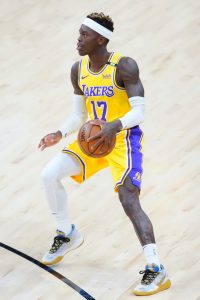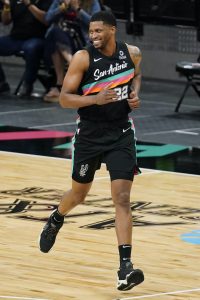The NBA released its Opening Week and Christmas Day schedules today, giving the basketball world a fresh slate of rivalry games, star matchups and, of course, snubs to discuss.
Christmas Day is always a special time for the NBA. For years, players have confirmed the added intensity and hype from playing in such high-profile matchups. For fans, it offers rare five-game slate of non-stop action of some of the most exciting teams in the league.
This year, the December 25 schedule is as follows (times listed in ET):
- 12:00pm: Hawks at Knicks
- 2:30pm: Celtics at Bucks
- 5:00pm: Warriors at Suns
- 8:00pm: Nets at Lakers
- 10:30pm: Mavericks at Jazz
There are a couple games here that stand out from an entertainment/ratings perspective.
What the Knicks-Hawks 2021 playoff series lacked in longevity it more than made up for in off-court fireworks, with Hawks star Trae Young and the Madison Square Garden crowd jawing back and forth at each other throughout the series, sometimes to an uncomfortable degree. The final image of the first-round matchup was Young taking a bow at center court after eliminating the Knicks from their first playoff appearance since 2013.
The NBA will be looking to play up this rivalry once more, especially as the Knicks have retooled, adding more shot-creators in Kemba Walker and Evan Fournier, partially in response to the team having its limitations exposed in said series.
Meanwhile, Nets-Lakers is set to be an absolute must-see game. The media circus surrounding the game will be unavoidable, as Kevin Durant and James Harden face off against former teammate Russell Westbrook and Kyrie Irving faces former teammate LeBron James.
On top of that, assuming health, the Nets and Lakers are the two favorites to win the championship, according to SportsBet.com, which means we could be witnessing a potential NBA Finals preview. Like with Warriors-CavaliersChristmas Day games of the past, what happens in this game will be used as a benchmark going forward as each team works toward their respective championship aspirations.
While the remaining games may not bring as much in terms of narrative, they each offer a fun and compelling matchup of star players who could also find themselves facing off in a playoff series: Giannis Antetokounmpo and the defending-champion Bucks against Jayson Tatum and the revamped Celtics, Luka Doncic and the Mavs against Donovan Mitchell and the Jazz, who had the best record in the league last year, and of course, two-time MVP Stephen Curry and the Warriors against the 2021 NBA Finalist Suns and Curry’s longtime rival Chris Paul.
The league is betting on the Warriors returning to form after two straight non-playoff seasons, facilitated by Klay Thompson‘s expected return to action, the additions of veterans Otto Porter and Nemanja Bjelica to shore up the bench rotations, and the improvement of young lottery picks James Wiseman, Jonathan Kuminga and Moses Moody.
But for all the star-studded games and renewed rivalries to enjoy, there are plenty of high-profile players and teams that we won’t be seeing. After appearing on 19 national TV games in the 2020/21 season, including Christmas, Zion Williamson and the Pelicans will not be making an appearance. Anthony Edwards, LaMelo Ball, and all of this year’s top-five picks are conspicuously absent, as is reigning MVP Nikola Jokic and his Nuggets. The Clippers, with Kawhi Leonard on the shelf, are out of sight, and Jimmy Butler‘s new-look Heat, Damian Lillard‘s Blazers, and Joel Embiid‘s Sixers will be watching from home like the rest of us.
Naturally not every team, and not every superstar, is able to play on Christmas. After all, the NBA is a star-studded league, with more talent flooding in every year, and there are only 10 slots to fill.
But we want to know what you think about this year’s Christmas Day schedule!
What games are you most excited about? Which game has the highest chance of being a dud? And most importantly, what team was the biggest snub from this year’s slate of action?
Take to the comments to let us know!
 Boston Celtics
Boston Celtics Utah Jazz
Utah Jazz